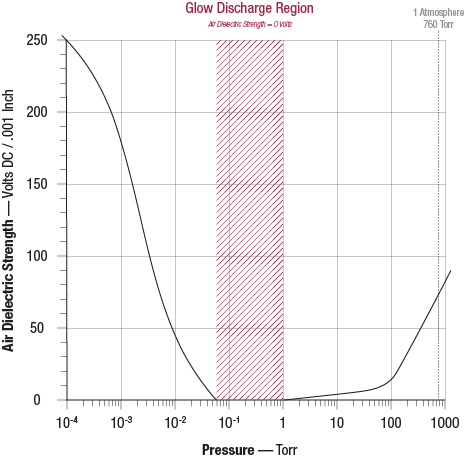How vacuum pressure impacts feedthrough voltage ratings
All electrical feedthroughs sold by AGP are rated for service with one side in high vacuum, at a pressure of 1x10E-4 Torr (1.333E-6 bar), and the other in air at a pressure of 760 Torr (1.013 bar)
Although ‘glow discharge’ is a phenomenon essential to many industrial and scientific applications, including neon and fluorescent lighting, cathode ray tubes, plasma-screen televisions, plasma physics, sputtering, and analytical chemistry. It is also undesirable or detrimental to a host of in-vacuum high voltage devices and applications.
The ‘glow discharge’ or plasma process is produced in low-pressure gas environments by applying a voltage differential between two electrodes—a cathode and anode pair. At some voltage threshold the low-pressure residual gas inside a vessel will ionize and become a plasma, loosing all insulating qualities and ultimately becoming electrically conductive.
The graph below shows how the dielectric strength of ‘air’ behaves with respect to pressure change inside a vacuum chamber. If producing a plasma is not your objective — for safety, and to prevent damage to sensitive electrical equipment, we recommend powering-down all high voltage sources and electrical devices while your vacuum system transitions (vents or pumps down) through the ‘glow discharge’ pressure region.

